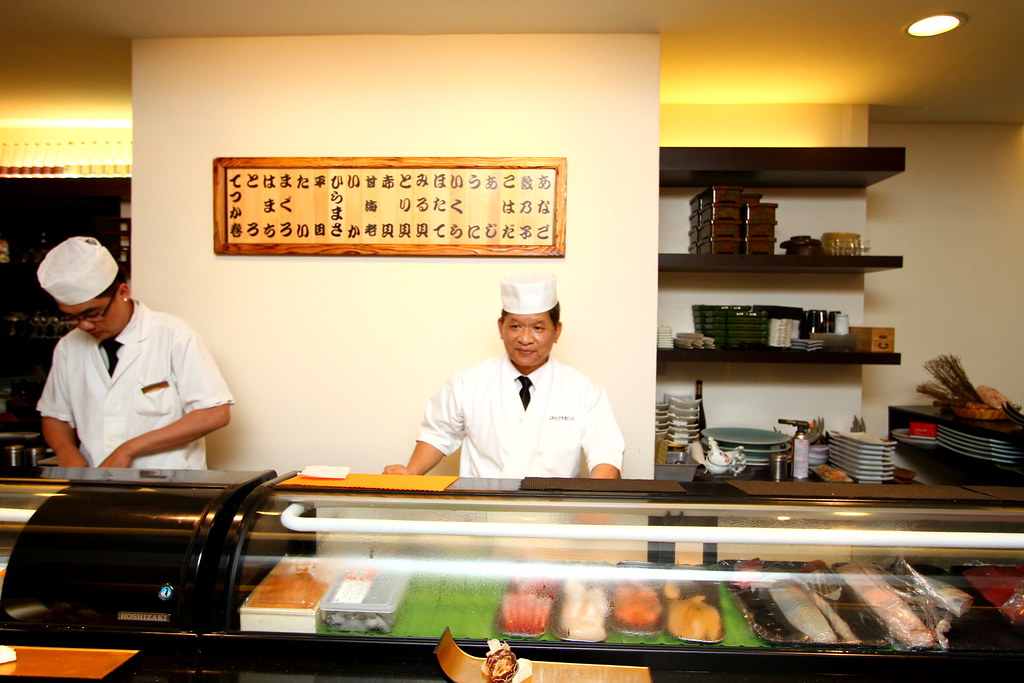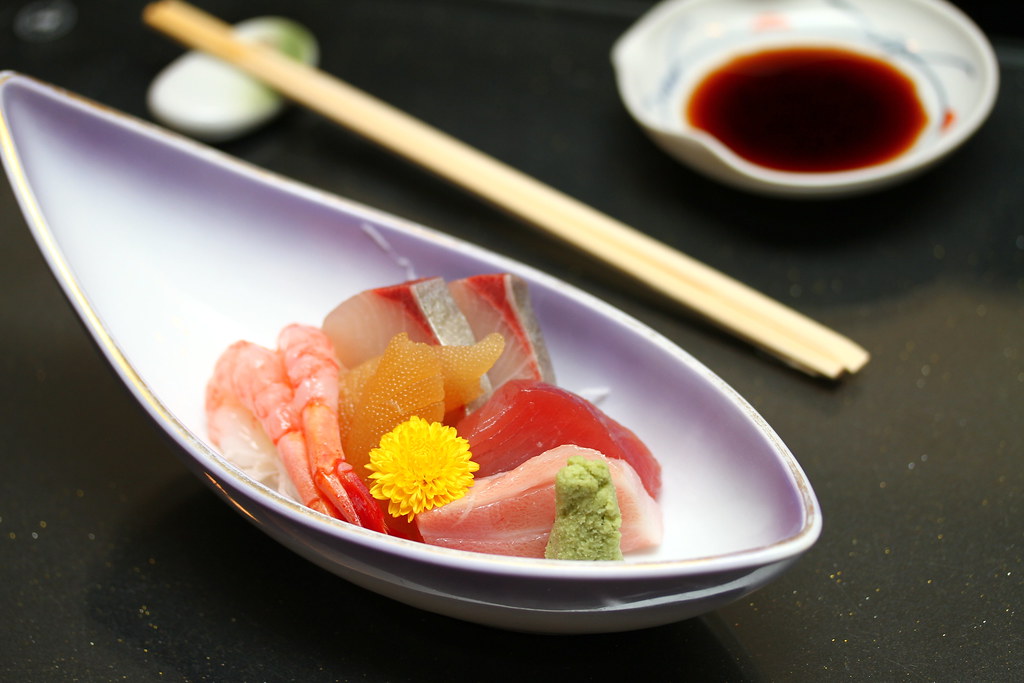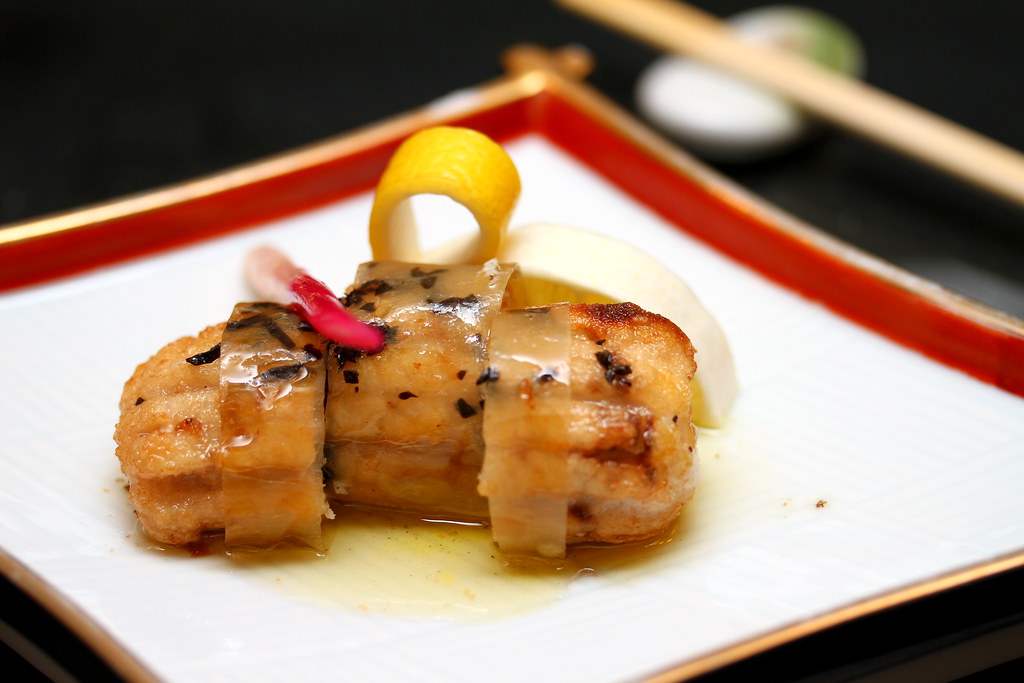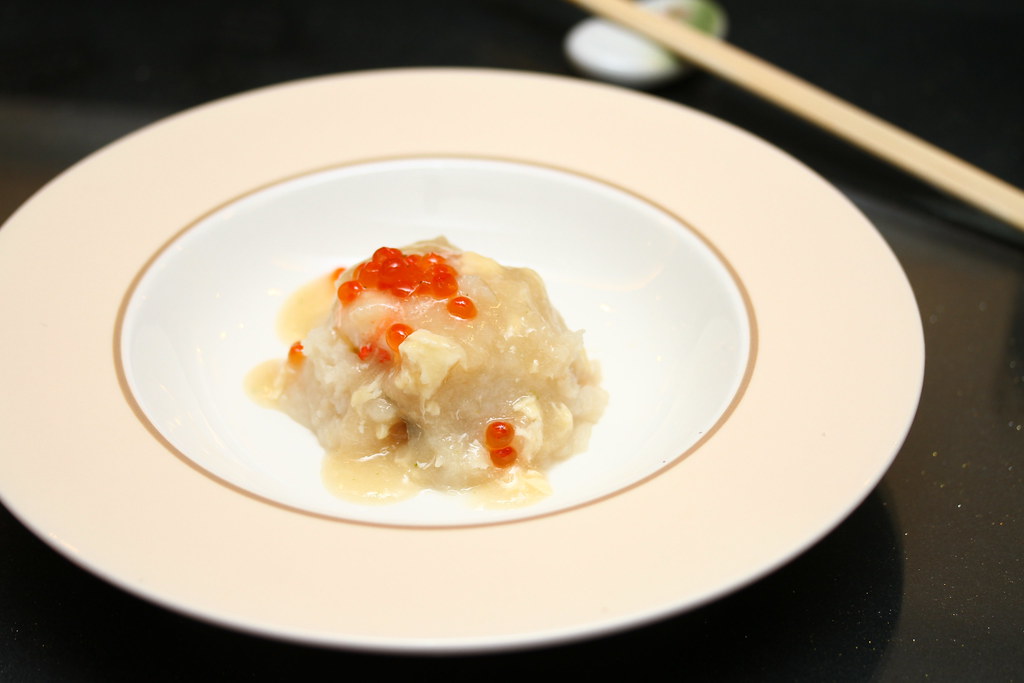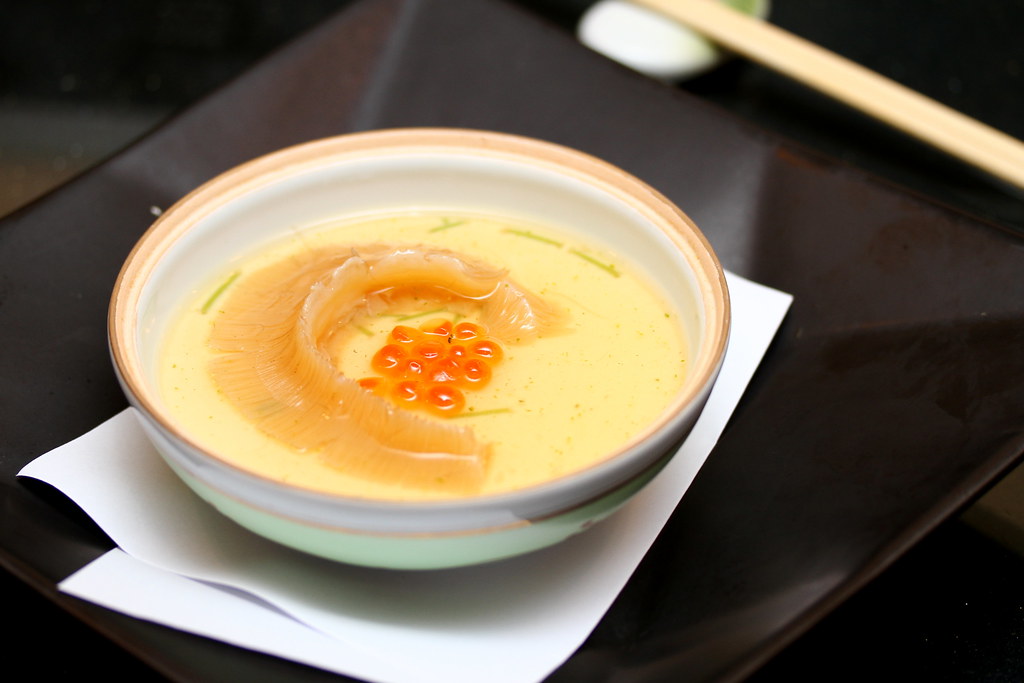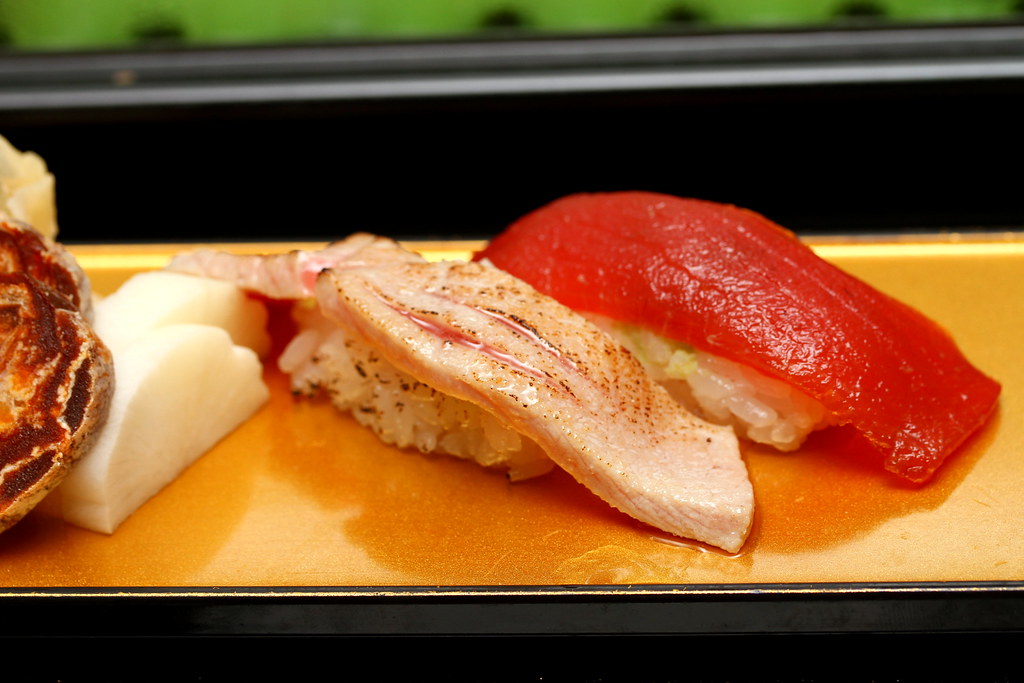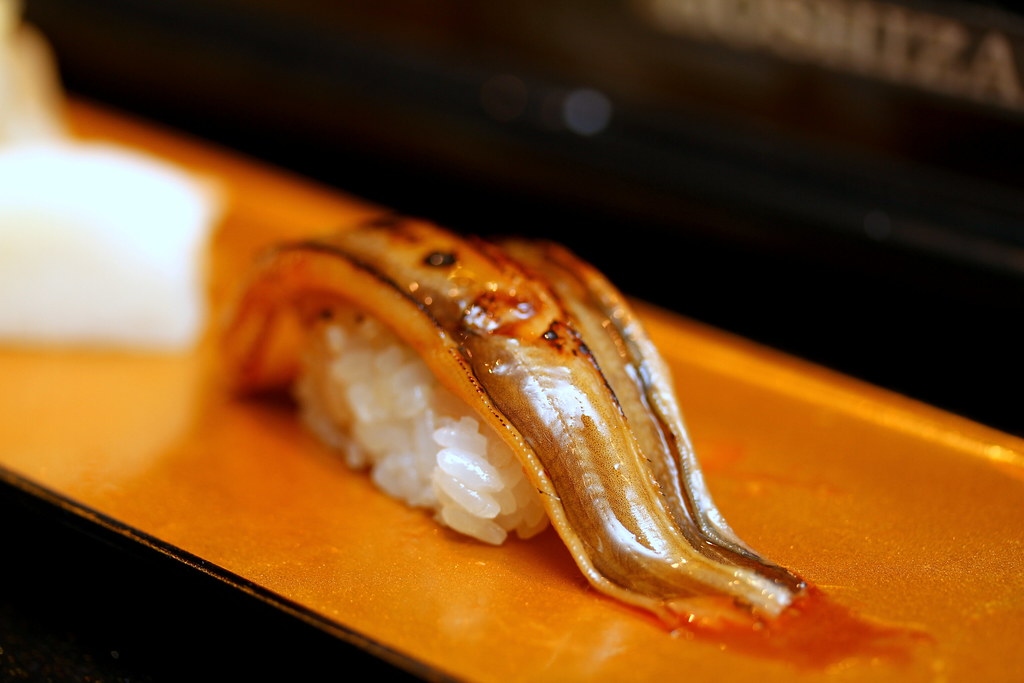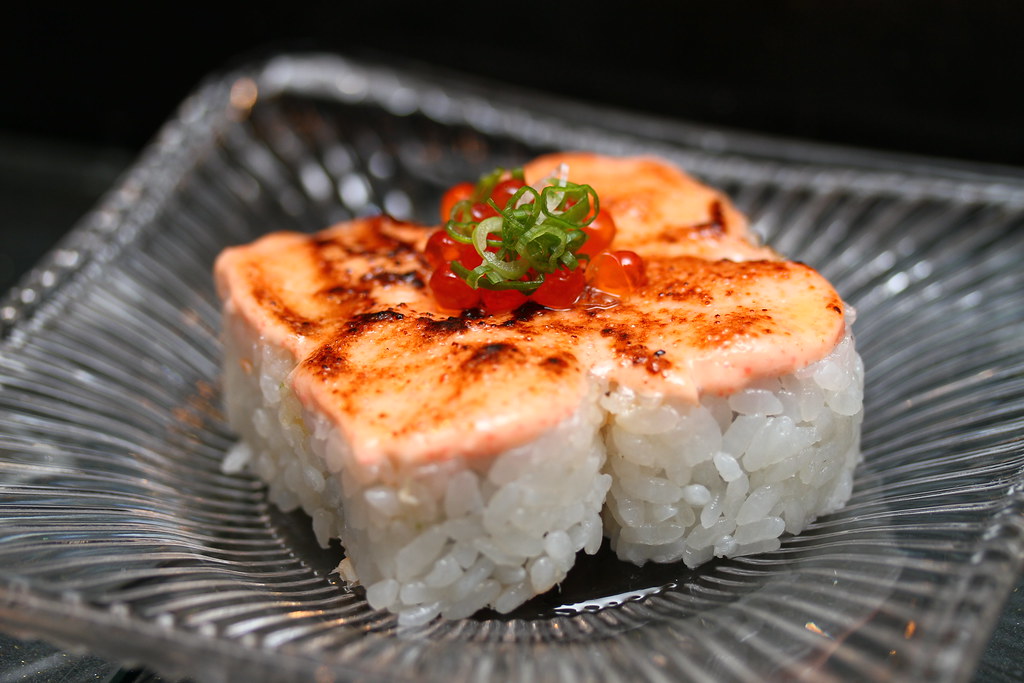Hinoki Japanese Dining – Masterchef Santaro Li Introduces Kappo Ryori Dining Concept
September 12, 2013

Opened in April 2011, Hinoki Japanese Dining is set in a pre-war shop house located along Nankin Row in China Square Mall in historical Chinatown. A few months ago, the restaurant welcomed renowned master chef Santaro Li to join them as executive chef.
One of the most highly respected Japanese chefs in Singapore with a huge following of fans, the 60-year-old Li-san was one of the earliest chefs to bring in authentic Japanese sushi to Singapore in the 1980s. Li-san is a ryori-jin (also known as masterchef), specialising in “kappo ryori”, who has conquered all aspects of Japanese cuisine, from sushi to grilling, stewing and boiling. To reach this level requires decades honing one’s skill over a broad range of specialities, for which Li-san has done over a career
spanning more than 40 years.
Chef Li spent three years in Tokyo working with the famous masterchef Michiba Rokusaburo, Japan’s first Iron Chef, from whom he learnt the art of Japanese cooking. He later worked at the Ritz Carlton Hong Kong, the Fort Canning Country Club, Nogawa and finally opened his own restaurant Santaro in 1997 which found a massive following enamoured with his artisanal cuisine.
The restaurant’s décor is contemporary, smart yet simple, decked out in clean lines, earth and achromatic tones. The simplicity is deliberate, to keep the focus on the food and its presentation. And there is the best seats? Of course is the 18-seat sushi counter
where you can watch Li-san and his team at work and enjoy a more interactive experience lah!
Casually put, “kappo ryori” is omakase lifted to the highest degree of Japanese gastronomy. A “kappo ryori course” with Chef Li could start with an elegant trio comprising of salted squid, smoked duck and pitan tofu. Starting with the homemade salted squid, I like how it was presented in a short glass. The shiraou was rather fat and beautifully balanced with the flavourful shoyu sauce. Moving on we have the smoked duck. Lastly we have the Pitan Tofu which is one of my all time favourites in Japanese cuisine. While century egg maybe an acquire taste for some, I simply adored the combination of creamy century egg paired with the chilled tofu.
As with all great chefs, Chef Li fully embraces the seasonality and quality of food and the art of fine presentation, all served up with an element of showmanship as he prepares the food in front of the customers.
The restaurant uses seasonal ingredients and seafood airflown directly from Tsukiji Market twice a week – Tuesdays and Fridays. The sashimi platter was possibly one of the best I’ve experienced thus far with fresh kanpachi, tuna, salmon, prawns, shiromi and herring roe. What is unique to me is the herring roe which has a firm, rubbery texture.
While his cooking is well rooted in the fundamentals of traditional Japanese culinary arts, he also pushes the potential of the cuisine with non-Japanese ingredients like foie gras and century egg, for instance.
I love this swordfish with with truffle oil, foie gras and speckled with kombu (seaweed). The fish is so moist with the fragrance from foie gras and truffle oil, giving a textural contrast every few bites.
Shojin ryori is a style of vegetarian cookery with a tradition that dates back more than 600 years. Shojin cooking is the food that is eaten by the monks and nuns in Buddhist temples and this braised daikon created by Chef Li is a traditional vegetarian temple food. The freshly grated radish is served with some salmon roe. Daikon is vital ingredient in shojin ryori, so is a good gauge for the quality of the chef and I would say the daikon is richly textured and braised.
Chef Hinoki’s signature Fukahire Chawanmushi is simple. It has a beautiful piece of sharks’ fin on top of the smooth steamed egg custard, with the salmon roe providing a burst of salty essence.
Being served by a sushi master is the ultimate bespoke food experience. Shari is the white rice used to make sushi. The best tasting shari is controlled by the temperature of the sushi chef’s body temperature. Chef Li has to keep his hands cold and wet as possible at all times to keep the grains of shari from sticking to his hands.
Before putting his hands to mould the shari, he has to clap his hands to remove the excess water on his hands to keep the sushi from being too watery. His hands literally dance, as the sushi is made and it is very entertaining to watch.
We tried a variety of sushi and particularly love the maguro sushi which has been marinated with soy sauce and a hint of ginger. The sushi here has a balance of the vinegar, soy and wasabi. The ingredient on top leaves a fresh flavour in your mouth and the rice breaks apart smoothly. Tasting each piece of Chef Li’s sushi is a pleasure.
It is very clear that Chef Li has a solid foundation of culinary expertise and my dinner there was one of the most enjoyable one. Dining at Hinoki gets more elaborate at dinner when there’s more time to linger over a meal. Try any of the three 7-course mini kaiseki meals ($85++) featuring Gindara, Wagyu Beef or Tempura or splurge out on a full omakase from $168++.
I am very interested in their lunch sets where they offer unique Lady Bento ($32) which contains no carbohydrates. For those who want to treat themselves, Hinoki offers a unique six-course Mini Kaiseki Lunch ($68++) and an eight-course Combination Lunch menu ($42++) where you choose two main courses from selected options like eel in claypot, sashimi moriawase, and cod fish in spicy cod roe.
Hinoki Japanese Dining
Address: 22 Cross Street, #01-50/53 China Square Central, South Bridge Court
Tel: 6536 7746
Opening Hours: 11:30am to 2.30pm; 6pm to 10.30pm
